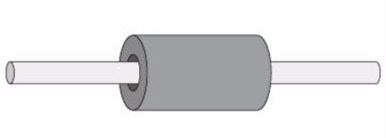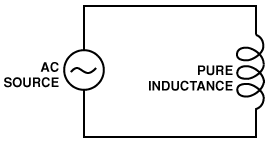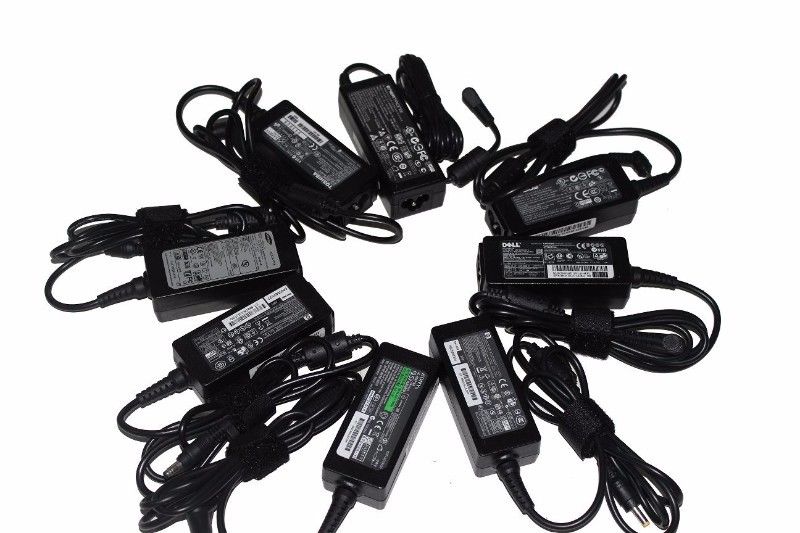
Fig 1. Cylindrical encapsulation which is seen in power cords & cables
The above image shows a typical charger which we use in our day-to-day life without paying much attention to the details. If we observe more closely, we see a small cylinder that lies close to the charging point. This is also present(at input end) for other peripheral devices of the PC.
So, what is this cylinder? Does this have any significance?
Yes, it indeed does…
The cylinder is called as Ferrite Bead. It is an inductor which plays an important role in the functioning of the device. The figure below shows a typical cylindrical Ferrite Bead through which a conductor(current carrying wire) passes.

Fig. 2 Conductor passing through Ferrite Bead[2]
So before delving into the functioning of the Ferrite Bead, let’s first understand how an inductor works,
An inductor is two terminal passive component which stores electrical energy in the form of magnetic field. The field generation is dependent on the way the conductor is wound to form the coil and the direction in which electricity flows through it.
Fig. 3 Basic functioning of an Inductor [4]
The bigger the coil or the greater the number of turns, the greater the induced field. This phenomenon is called as inductance. Inductive reactance is the name given to the opposition to a changing current flow. This measured in ohms just like resistance.

Fig. 4 Inductor in an AC circuit[3]
Inductance in AC circuit
Inductive reactance or XL =2* pi *f * L
XL = inductive reactance measured in ohms
pi= 3.142 (constant)
f = AC supply frequency (Hz)
L = Coil Inductance (Henry)

Fig. 5 Inductive Reactance versus frequency[3]
This graph points to the potential application of an inductor as a Low Pass Filter(LPF) in an RF circuit ie. allowing only frequencies below a certain value to pass and blocking the higher frequencies. The fc stands for cut-off frequency above which all the frequencies are attenuated. The Low Pass Filter(LPF) Block comprises of Inductor(L) and Resistor(R).


Fig. 6 Low Pass Filter Implemented Using Inductor(L) & its characteristics vs frequency[8]
From this, we can define for an inductor a term called as “Quality Factor”[9]

Higher the Q: More Inductive, Less Resistive
Lower the Q: Less Inductive, More Resistive
Now after seeing how an inductor behaves as a function frequency, let’s go back to our topic at hand, Ferrite Bead

Fig. 6 Ferrite Beads [5]

Fig. 7 Power & Return Cable going through Ferrite Bead[6]
1. Ferrite Bead & 2. DC Power and Return Cables

Fig. 8 Ferrite Bead in Laptop Charger [7]
When current flows through its terminals, similar to the inductor, a magnetic field is generated inside the Ferrite Bead. This is illustrated as shown in the image below.

Fig. 9 Magnetic field induction due electric current passage[7]
Noise is a spurious signal which superimposes on the desired signal. The origin of the noise can be from other devices working in the vicinity at RF frequency. In a high-frequency circuit, noise can corrupt the signal or cause Electro-magnetic Interference(EMI).
Ferrite Beads, when introduced in a circuit function very similar to an inductor. The act as a Low Pass Filter(LPF).
But there is a slight difference…….
Due to the materials used in making the coil, the Ferrite Bead has high loss at high frequencies. This is owing to low Q (either highly resistive).
Within the high-frequency range, the energy is lost in the Ferrite Bead enabling noise to be absorbed effectively. This means the device which has the Ferrite Bead functions only at fundamental frequency ie. the rated frequency thereby protecting the device and avoiding any EMI. This is helpful while working with our laptop in the vicinity of medical devices and/or transmission/receiving devices.
Here I have tried to give an overview regarding Ferrite Bead basics and its use to suppress noise.
If you want to share your opinion kindly do so in the comments section or email me at u2d2tech@gmail.com.
References:
1. https://en.m.wikipedia.org/wiki/Ferrite_(iron)
2. https://www.murata.com/products/emiconfun/emc/2011/06/14/en-20110614-p1
3. https://c03.apogee.net/contentplayer/?coursetype=foe&utilityid=wppi&id=4571
4. https://www.murata.com/products/emiconfun/inductor/2010/12/15/en-20101215-p1
5. https://www.nonstopsystems.com/radio/frank_radio_baluns.htm
8. http://www.learningaboutelectronics.com/Articles/Low-pass-filter-calculator.php
9. https://www.wirelesspowerconsortium.com/technology/quality-factor.html


YOU NEED QUALITY VISITORS THAT BUY FROM YOU ?I can get for your site visitors:- from search engines – visitors from social media – visitors from any country you want – very low bounce rate & long visit durationCLAIM YOUR 24 HOURS FREE TEST => https://bit.ly/3gqLEoEDo not forget to read Review to convince you, is already being tested by many people who have trusted it !!
LikeLike
Like!! Really appreciate you sharing this blog post.Really thank you! Keep writing.
LikeLike
Thank you 😊
LikeLike
I’m really enjoying the design and layout of your website. It’s a very easy on the eyes which makes it much more pleasant for me to come here and visit more often. Did you hire out a designer to create your theme? Excellent work!
LikeLike
as soon as I observed this web site I went on reddit to share some of the love with them.
LikeLiked by 1 person